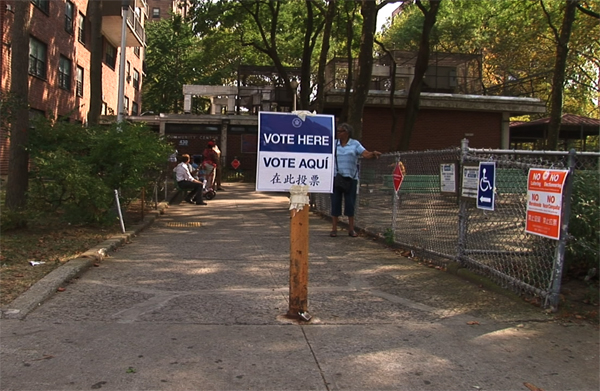
The New York State Board of Elections (BOE) agreed Wednesday to email accessible ballots to those with disabilities who request them, following a May 22 lawsuit by several disability advocacy groups.
The accessible ballot will be emailed to voters upon request on or before June 16. The accessible ballot can be read and marked with assistive technology and then has to be printed out and mailed to individuals’ respective county BOE’s. There’s a link to the application form for the ballot on the BOE website and the application form is also accessible.
Christina Brandt-Young, an attorney with Disability Rights Advocates who represents some of the plaintiffs in the suit, said the agreement is a good first step in making absentee voting accessible in New York.
“It is far more accessible than the process that the Board of Elections had previously, which was paper ballots,” Brandt-Young said. “And paper ballots are completely inaccessible to people who can’t read them or mark them.”
Brandt-Young said that while advocates are happy they won this concession from the BOE in response to their preliminary injunction, it only applies to the June 23 primary and their lawsuit to make absentee voting in future elections accessible is ongoing.
The lawsuit was brought by several disability advocacy groups including Disability Rights New York, the American Council of the Blind—New York (ACBNY), Center for Independence of the Disabled, New York (CIDNY) and the National Federation of the Blind of New York State as well as four individual voters with disabilities. They are represented by Disability Rights Advocates and Brown Goldstein & Levy LLP.
Disability advocates said they took legal action in response to Gov. Andrew Cuomo’s early April executive order that allowed all New Yorkers to apply for absentee ballots so as to avoid going to the polls amid the COVID-19 crisis. The plaintiffs argued the expansion of absentee voting disenfranchised voters with disabilities because it only allowed for voting via paper ballots, which are inaccessible to those with visual impairments and dexterity issues. Advocates said this would’ve forced voters with disabilities to risk their health by going to the polls during a pandemic, so they could use accessible voting machines called ballot marking devices.
The BOE acknowledged in a press release that this is the first time New Yorkers with disabilities will be able to vote privately and autonomously in their homes with the help of assistive technology.
Karen Blachowicz, president of ACBNY, said this is a great beginning in the process of increasing accessibility but that there’s far more work to be done.
“We’re looking forward to making much more progress with them down the line,” Blachowicz said.
Brandt-Young said they’re hoping to increase accessibility in future elections by making it so absentee ballots can be sent in electronically, instead of having to be printed and mailed, and by providing an accessible option to voters who don’t have internet access.
Susan Dooha, executive director of CIDNY, said first they need to see how this method works for the June primaries before making plans for future elections.
“There are a number of factors: how many people use it, what kind of problems emerge,” Dooha said. “But we are looking forward to how we can make voting accessible for everyone in November.”









One thought on “Officials and Advocates Agree on Plan to Make June 23 Voting More Accessible”
As an advocate for individuals with print and visual disabilities to enjoy their right to independent private and accessible voting by absentee ballot, i was honored to speak with one of the paralegals at DRA earlier this week. And moving forward, i hope to continue to be a part of the process to permanently ensure equal access to voting for the disabilities community